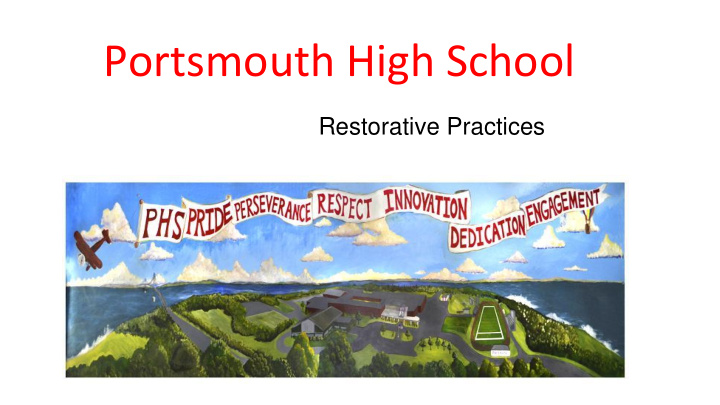



Portsmouth High School Restorative Practices Portsmouth High School
Fundamental hypothesis of RP What we call student and stakeholder voice “ Human beings are happier, more cooperative and productive, and more likely to make positive changes in their behavior when those in positions of authority do things with them, rather than to them or for them.”
Restorative Practices “The aim of Restorative Practices in school communities is to develop community and to manage conflict and tensions by repairing harm and restoring relationships. “ build social capital and achieve social discipline through participatory learning and decision making.”
Refining Insert content Tier 1 Building Relationships
Responding to Challenging Behavior
Responding to Challenging Behavior
Proactive Restorative Practices Planning
Restorative Training
Become Trauma-Informed When dealing with people, adults or children, assume the possibility of trauma.
Being Trauma-Informed Be conscious of – ● Taking insult or aggression personally. ● Escalating traumatic responses. ● Power imbalances that feel threatening. ● Assuming what unwanted behavior means
The Basic Tools Tool #1: Circles
Circle Structure: ● Democracy- Everyone answers the same question ● Establish and review guidelines ● Significance of a talking piece ● Keeper/Facilitator ● Consensus decision making
Tool #2:
Tool #3: “I” Statements I feel……. I want……. I see……...
We use “I” statements especially when: ● We need to confront others about their behavior ● We feel others are not treating us right ● We feel defensive or angry ● Others are angry with us The secret of success lies in: ★ Stating your case without arousing the other person’s defenses ★ Saying how it is for you, rather than what they should or should not do.
Recommend
More recommend